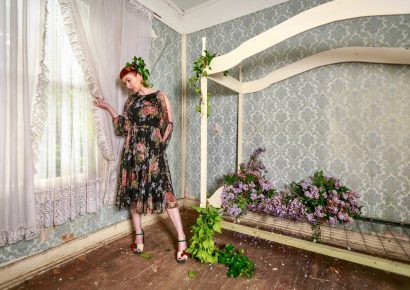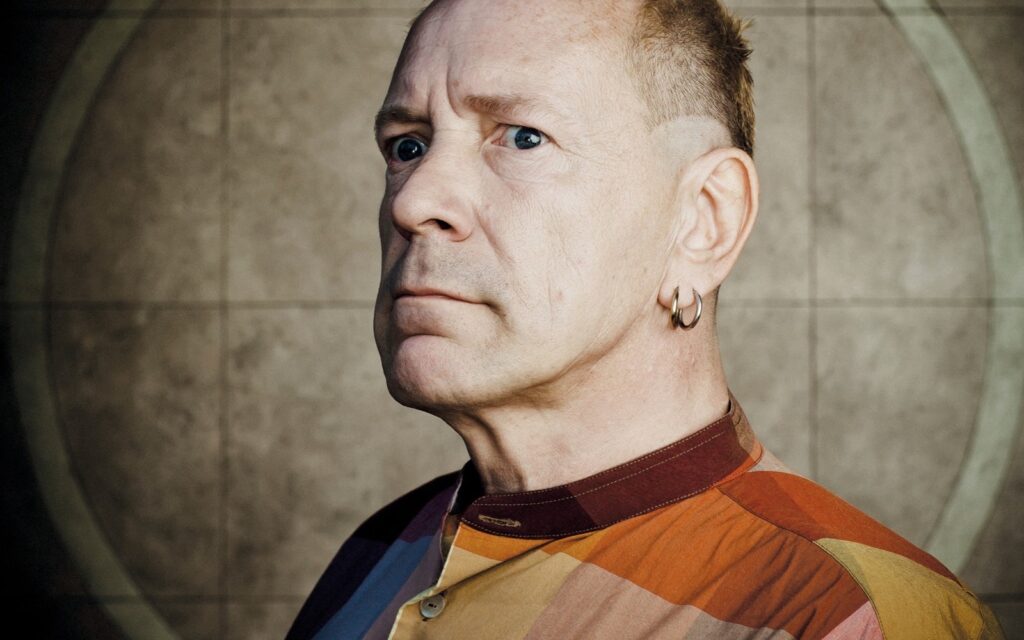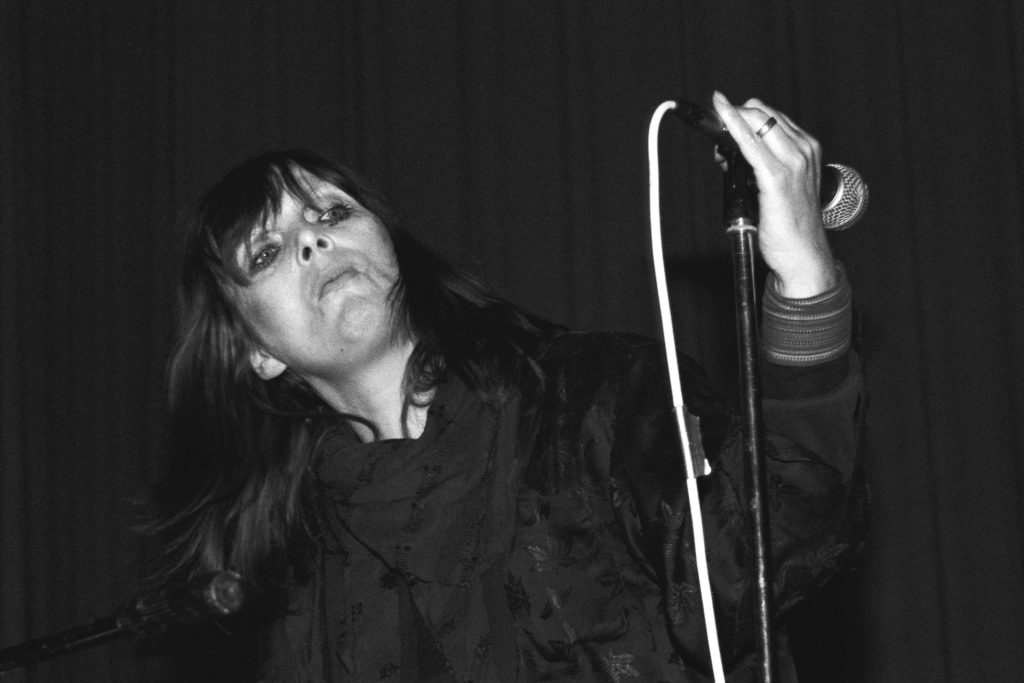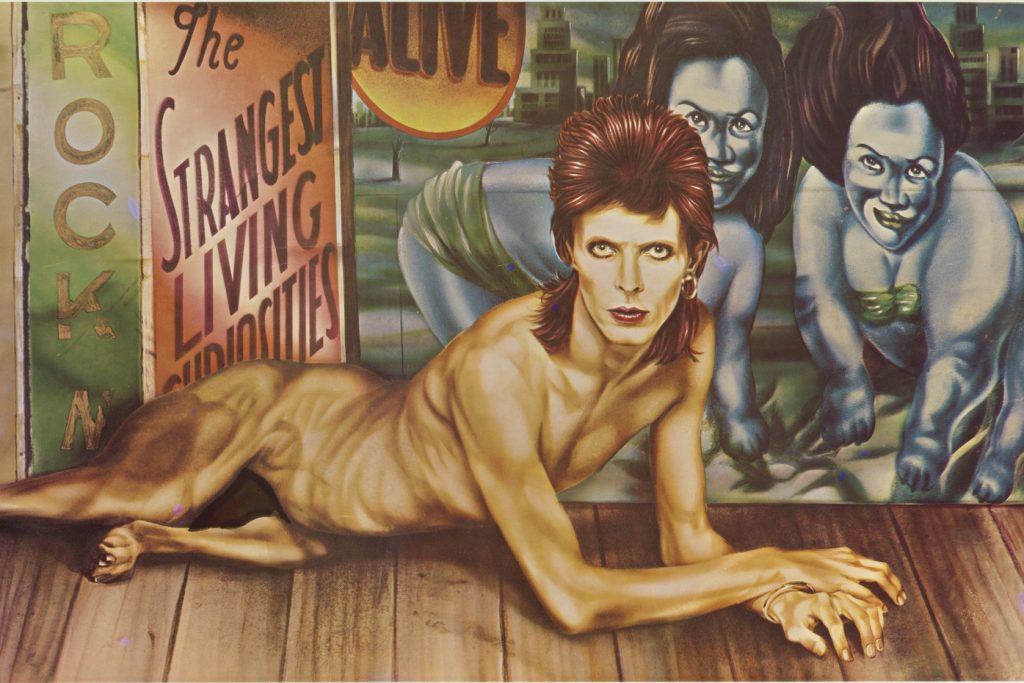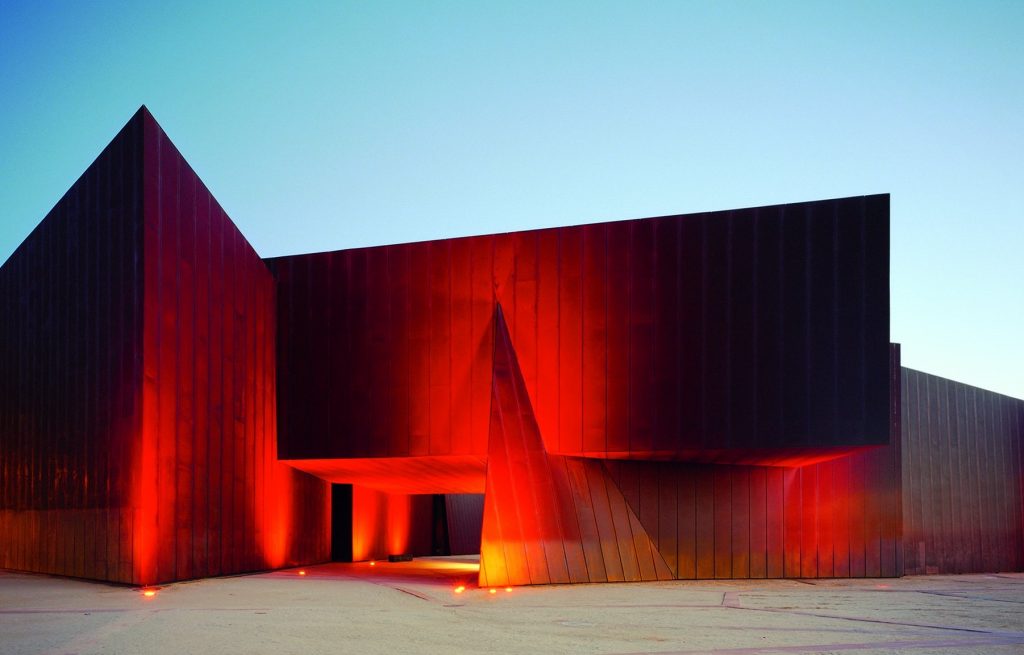For those who always dreamt of being a fly on the wall at Pink Floyd’s groundbreaking Live at Pompeii concert, attending a gig at a Parthenon replica might be the next best thing.
This summer, Melbourne is getting a chance to experience the same surreal magic of watching live music and performances whilst marvelling at an ancient architectural feat.
Temple of Boom – a reimagining of the Parthenon temple on the Acropolis – is the winner of the NGV Architecture Commission for 2022, which has just ticked over into its seventh year. The competition encourages Australian architects to develop a work of site-specific, short-term architecture for the NGV’s Grill Equiest Garden.
Explore Melbourne’s latest arts and theatrical events, exhibitions, productions and performances here.
Adam Newman and Kelvin Tsang – both based at the Northside architecture practice NWMN – are the titans behind Temple of Boom. Adam specialises in adaptive building reuse and regeneration with a priority of conscious engagement with local ecologies.
Kelvin is drawn towards narrative-driven architectural design and image production as a vehicle in which to illustrate architecture’s role as a driver of positive change.
Temple of Boom will transform into a site for social engagement in the aestival months. There will be live music operating under the NGV’s cherished series Friday Nights and the Hellenic Museum will host panel discussions, a VR experience transporting guests to The Parthenon, and Greek poetry readings.
The opportunity to create a space where Melbourne’s art and live music community can meet again post-lockdown propelled Adam and Kelvin’s vision forward. “We have a lot of friends in the arts scene – PBS and Triple R are very close to our hearts…and this scene was hit really hard in the lockdowns,” Adam said. “NGV is a place that brings people together.”
View this post on Instagram
The project was a COVID baby; 15 months in the making. “It’s been a fascinating journey…the building is an endless rabbit hole of interest on any level,” Adam said.
The pair transformed a “simple premise” into a beautiful and complex homage to the Parthenon. They were eager to see the conversations and interpretations that would develop if they reimagined the most copied architectural symbol on the planet at Australia’s oldest gallery.
Adam and Kelvin also worked with local Melbourne artists Manda Lane, David Lee Pereira, and Drez. These artists will continue to paint overlapping and large-scale artworks over the monument – built to a third of the scale of the original building – from now until August 2023. The inclusion of artwork infuses the site with further opportunities for diverse interpretations.
The duo also addressed how placing this reimagining on Wudrungeri Woi Wurrung country undeniably adds to the multi-layered meaning embedded in Temple of Boom.
“We were really conscious that the meaning be ambiguous…it’s not intended to teach any lessons – the way that someone from the Greek diaspora interprets it will be very different to how a First Nations person will interpret what this symbol means,” Adam said.
The Parthenon’s architectural prowess is indebted to a golden era in Western civilisation and democracy. “It was a period bursting with architecture, philosophy, and science,” Adam said.
The idealistic and ambitious statesman Pericles proposed the construction of the Parthenon as a dedication to Athena, the goddess of Athens. He also aimed for the building’s architectural excellence and the impressive manpower required for construction to act as a vehicle in which to illustrate the esteemed democratic values of Greece.
The construction started in approximately 450 BC and allegedly spanned only fifteen years.
“There is consensus that even with all our technological advantages we would not be able to build the Parthenon today,” Adam said. One of the most impressive features of Temple of Boom is the meticulous care taken by the team to represent the constant physical damage to the Parthenon, which Adam described as a building “bookended by war”.
“The Persians demolished the temple where the Parthenon is now and the Greeks rebuilt it bigger and better…yet after completion, they entered into a war with Sparta,” he said.
Additionally, in the late seventeenth century, the Venetian Empire attacked the city and fired a cannonball directly into the Parthenon. There’s a V-shaped form on the north side of Temple of Boom that accounts for the damage caused by this isolated explosion.
Although the Parthenon was subject to threats from constant warfare it has remained a poignant example of resilience and strength.
However, the restoration efforts to the Parthenon, which commenced in the 1970s and are still ongoing, often spark controversy. In February last year, numerous figures in the international academic community labelled the planned restorations to the Propylaea – a grand entrance hall to the temple – as “degrading the greatest archaeological treasure in modern Greece”.
Adam and Kelvin’s intention for the site to be a place of diverse engagement also achieves a somewhat democratised learning process into certain epochs in history.
Kelvin envisions that Temple of Boom will inspire guests who are not familiar with the Parthenon or the chaotic history of Athens to search the history on their smartphones or read the information cards in the garden.
“The site, as simply a beautiful thing, will resonate with people who may have never even heard of the name ‘Parthenon’,” he said.
View this post on Instagram
Adam and Kelvin hope that while visitors are using the site for social engagement with relish, they will also ponder the effect of time on architectural feats such as the Parthenon.
The effect of time surely means that audiences this summer will connect with Temple of Boom very differently from the Ancient Greeks. However, Adam addressed how our desire to create and kill means we are not so different from our ancestors.
“We’re still these crazy creatures doing violent things…there’s a direct line from our current society back to Periclean Athens,” he said.
Also incorporated into the Parthenon’s history and of topical significance to Temple of Boom is the hotly anticipated return of the Parthenon marbles to Greece. In 1801, Scottish soldier and diplomat Lord Elgin removed the marbles from the site and subsequently sold them to the British government. They have remained at the British Museum ever since.
For the past 200 years, a bitter war rooted in geopolitics, imperial greed, and contradictory restrictions as owed to the outdated British Museum Act 1963 has prohibited the rightful return of the marbles to Greece.
The British Museum has always maintained that only governments are capable of deciding the fate of on-loan goods. However, governments argue that it is a matter for trustees. In October of this year, former cultural minister Ed Vaizey announced his plan to chair a body that will advocate for the return of the marbles to Greece.
Adam confirmed both The Parthenon Society and The Hellenic Museum, alongside the newspaper Neos Cosmos, have communicated their hope that Temple of Boom will generate discussions regarding the return of the marbles to Greece.
When reflecting on their journey, the pair agreed the awe felt toward the Parthenon’s craftsmanship and symbolic power never fades.
“When I first started studying architecture this was one of the first buildings I researched…but even throughout this process, we fell more and more in love with the building,” Kelvin said.
The NGV Architecture Commission 2022: Temple of Boom is on display from 22 November 2022 at NGV International, St Kilda Road, Melbourne. Free entry. Further information is available via the NGV website.

